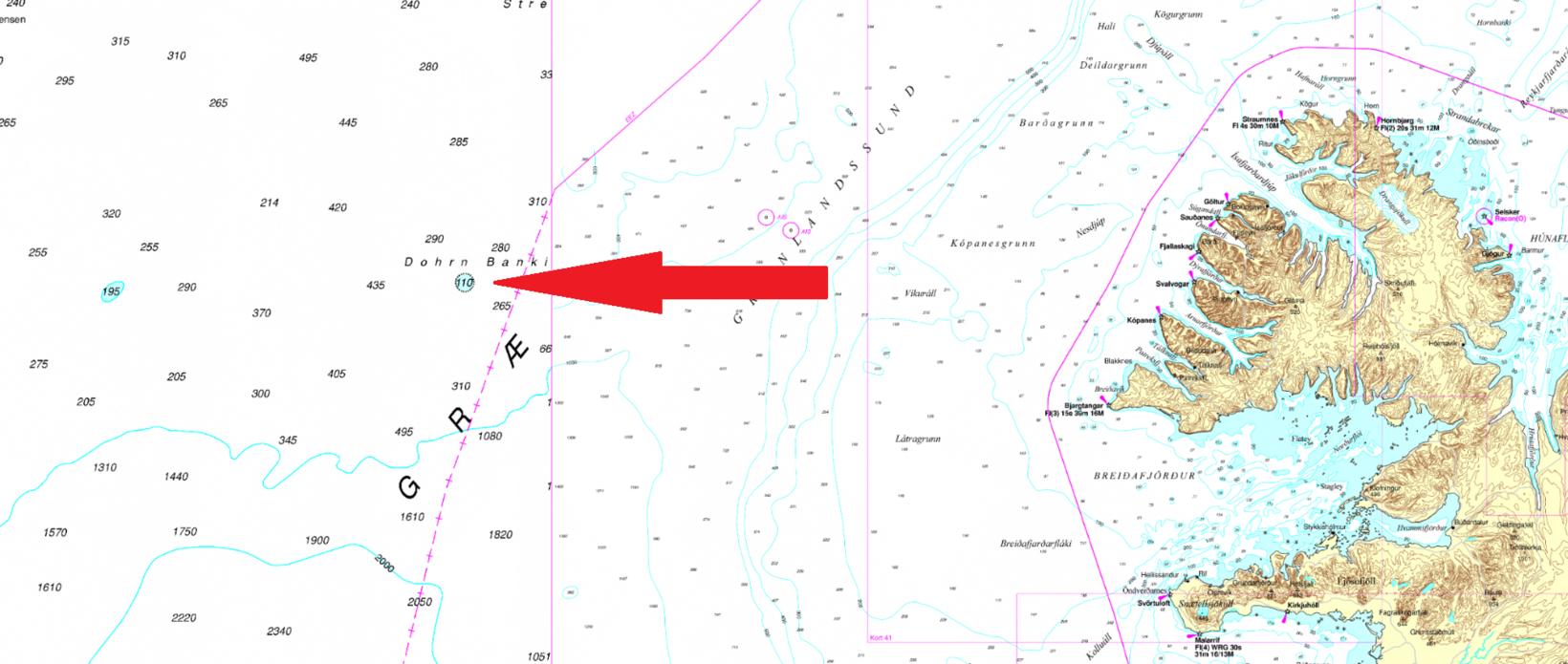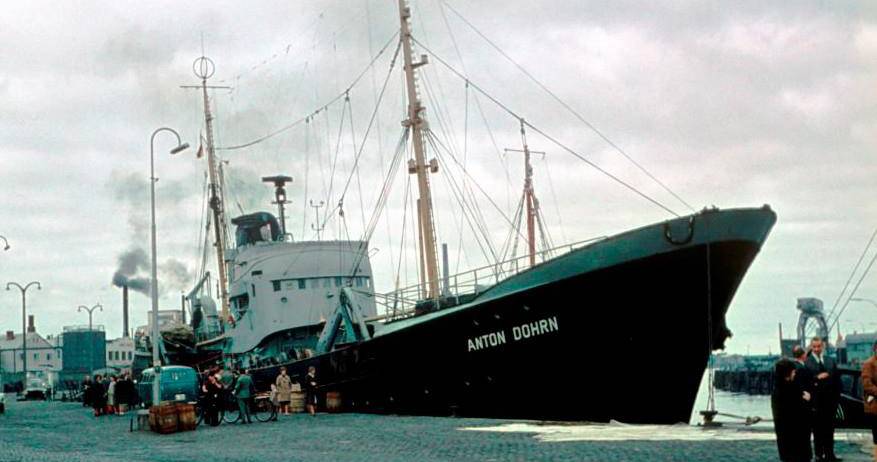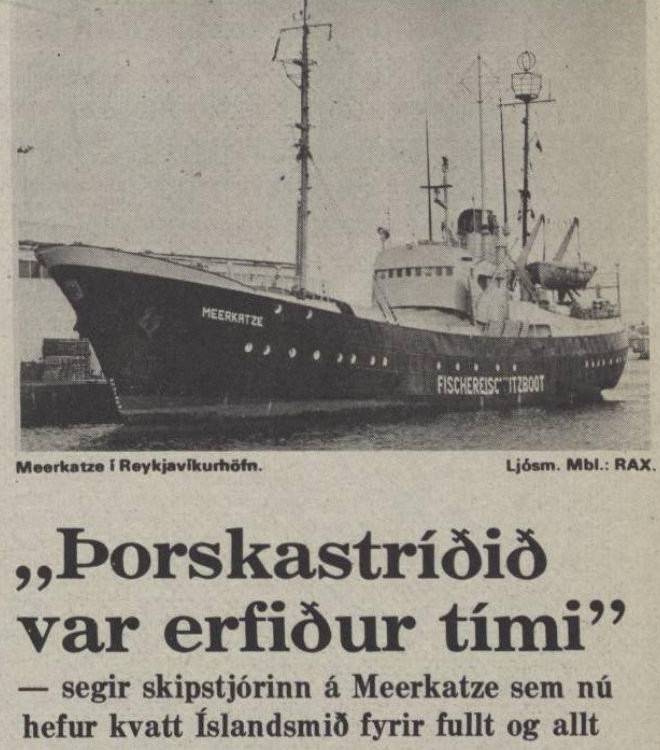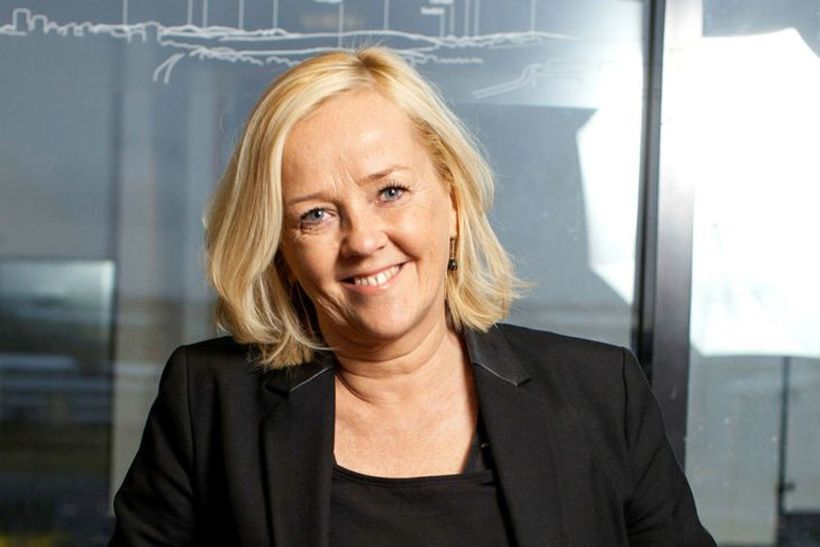Name of Germans on Icelandic fishing grounds

The Dohrnbank is rarely mentioned in the news of fishing for Icelandic fishing vessels as well as foreign, especially Greenlandic. There is reference to fishing grounds at the boundaries of the jurisdiction of Iceland and Greenland. But where does this name come from, Dohrn, and what has it to do with this bank?
This was discussed in an article in Last sheet 200 miles.
A bank, which is really just another name above the foundation, is defined as an underwater height or sea area that is shallow compared to the surrounding seabed. In such areas, nutrients are often formed that create the basis for diverse biota and ideal conditions for fish. The most famous banks are undoubtedly Doggerbanki in the North Sea and Miklibanki in Newfoundland, but the position of fish stocks in these areas is not very good due to overfishing.
At Dohrnbanki, like many banks, it is found to be exceptionally generous fishing grounds and to apply for ships there, among other things, a large cod on a large scale. The fishing grounds, however, were not discovered until 1955 in the mission of the West German research vessel Anton Dohrn. The ship has a significant history and for many years had frequent contact in Icelandic waters and in Icelandic ports.
The history of the ship is traced to a special website dedicated to the research vessel (Anton-dohrn.de) and there is a array of information such as a copy of the research director’s diaries.
High investment
In 1952-seven years after the end of World War II-the food, agricultural, agricultural and forestry ministry decided to finance the construction of marine research vessels and the purchase of all the associated research equipment. Then the extensive planning and design process began and after that the construction was tendered. At the end of the auction process, Mützelfelfeldt Shipyard in Cuxhaven was selected and began construction in early May 1953.
The ship was named 16. Agúst in 1954 and was launched the same day. As mentioned earlier, the ship was named Anton Dohrn and it was in the head of the same biologist who opened the first marine research center in the world in Naples 1872. Anton’s grandson Anton Dohrns, dr. Antonie Dohrn, baptized the ship.
Konrad Adenauer Chancellor of the Federal Republic of Germany Ogtheodor Heuss President at a meeting in Bonn in Spettember 1959.
Photo/Bundesarchiv/Rolf Unterberg
Anton Dohrn was then formally delivered at a ceremony on February 10, 1955, or exactly seven decades on Monday. On behalf of the Federal Republic of Germany (West Germany), President Theodor Heuss took over the ship. He was the first president of West Germany and held office until 1959. Remembering no doubt that the mark of Konrad Adenauer was a chancellor during these years.
The brand new marine research vessel Western Germans was 999 gross tonnes and constructed as a pageant, but it was the first two deck of the worldwide trawler. The crew contained a total of 30, of which 15 were scientists, as well as on board were a shipping physician, meteorologist and weather inspector.
Well equipped
Anton Dohrn was probably one of the most advanced research vessels of his time and was, among other things, on board a very spacious processing tire that provided the opportunity to install a variety of fish processing machines for tests. The train was able to store about a thousand cars of fish, but 18 cubic meters of freezer storage was on board and it could cool completely to -25 ° C.
As readers may have realized, marine research at this time turned as much about research on fisheries and research on the ocean itself and its biosphere. The ecosystem approach and sustainable utilization of marine resources were not at the level we know today. The purpose of the marine research vessel was therefore no less to find a great target for the German fishing fleet than to investigate the marine environment.
Anton Dohrn was undoubtedly the most technologically advanced marine research vessel of his time.
Photo/Thünen-Institut: R. Hollnagel
On board were also various types of laboratories, including the sea rooms, marine laboratory, biology laboratories, fish laboratory, fisheries laboratories, fishing gear laboratories, echo measuring rooms, dark rooms, sea -watered storage rooms with fish centers and waterfalls.
28 times around the globe
Anton Dohrn held 164 research expeditions and spent a total of 3,727 days at sea. In 8,157 times, samples were picked up with a troll and 7,777 times with a note. At the time Anton Dohrn conducted marine research, the ship sailed more than 600,000 nautical miles, over 1,110 thousand kilometers. It is the equivalent of almost 28 trips around the earth.
The ship is famous for two special discoveries. First and foremost the discovery of the aforementioned fishing grounds between Iceland and Greenland, which was named Dohrnbanki, in 1955 and then the discovery of the underwater mountain Anton Dohrn out of the South Islands (Hebrides) in Scotland.
After 17 years in the service of West Germany as a marine research vessel, the ship was laid in the summer of 1972. In 1986, the ship was then sold in scrap iron.
Icelandic Celebration solemnly
It was reported in Morgunblaðið in July 1977 that Meerkatze (formerly Anton Dohrn) had, on the occasion of his last trip from Iceland, offered marks on board. The captains of the Coast Guard and its CEO, as well as the headmaster of the Reykjavik harbor, met.
« I have always been well acquainted with Icelandic waters, except what in the cod war never felt good and then we could never seek a port, it was a difficult time. However, I think life was much more difficult for the fishermen. Meerkatze on the occasion.
The article was first published in February paper 200 miles.










